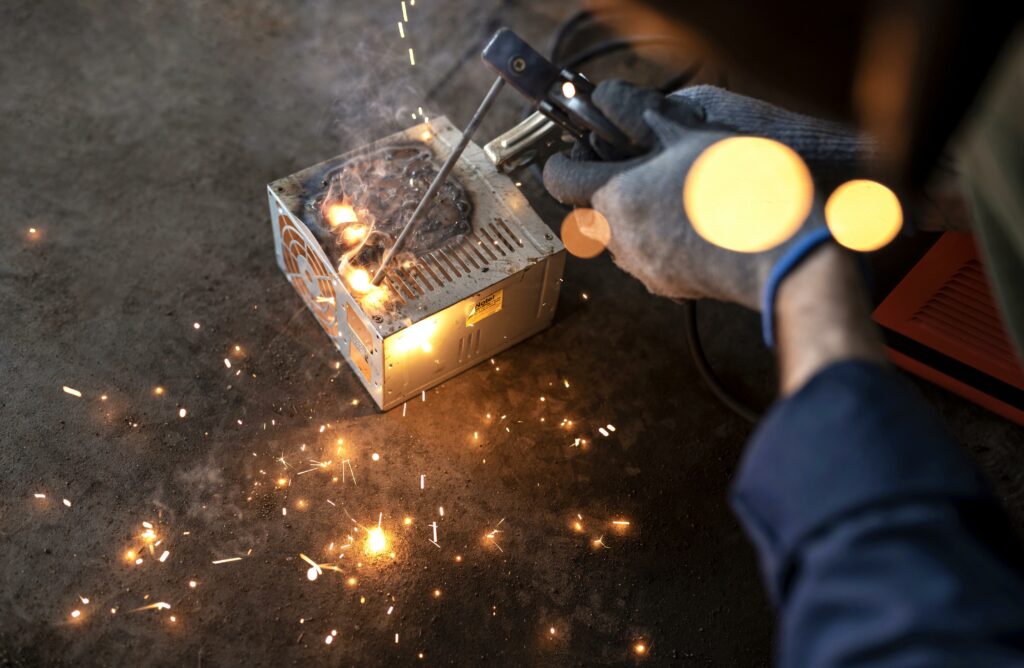DC welding offers a certain advantage over AC in applications for welding sticks. In DC, the electrodes are irradiated positively (reversed) and negatively (negative) on the positive side of the weld seam.
DC is the best way for beginners to learn welding, and AC is a second choice, just make sure they’ve got the best welding helmet to protect themselves. DC welding also ensures a smoother arc, fewer arc failures and no bonding. There is less spatter, it is generally easier to start and welding overhead is much easier. The weld has a better appearance and the straight polarity of the DC welds many thin metals better than AC ‘
Among the situations where DC welding is useful are welding with thin sheets such as steel, aluminum, copper, stainless steel and many other metals.
Because with direct current welding, much thinner metal pieces can be welded than with alternating current welding. Although AC is usually the second choice for welding equipment, it is better to work with metals that have a magnetic field, such as steel, aluminum, copper, stainless steel and many other metals. As already mentioned, DC welding is best suited for cutting to threads, and this is because welding a very thin metal can cause considerably less damage than AC welding.
The machines frequently used for DC welding are also considered to be cheaper than the machines used for AC welding. The machines, which often use DC welders, are also often confiscated for less than half the cost compared to machines with AC welding.
DC welding leads to smoother welding and there is less risk of spattering due to the direct current produced. In addition, welding with a DC welding machine ensures a faster deposition rate, as the electrodes melt much faster with the current.
This means that both AC and DC welders are very useful, it only depends on what you use them for. The intensity you get with a DC welder makes it much more efficient than an AC welder. If you use AC or DC welding, these are much cheaper and much better for your project than the AC welding machine.
Tungsten inert gas (TIG) is an unused tungsten electrode that is used to make a weld while the gas protects the area from external contamination. In arc welding, a material is produced that is to be welded in such a way that the metal melts at the welding point.
An electric current is an alternating current (AC) or a direct current (AC). AC and DC welders need to understand that the power supply can be used for both DC (DC) and AC (AC).
The DC curve flows only in one direction, but the DC can flow in both directions, although one cannot remember only DC. The DC hardening only flows in one direction and the alternating current only in the other direction.
This position is good if you want to penetrate deep, but the opposite is best with thin metals where burning through is a problem for sheet metal.
Understanding the difference between AC and DC welding can be difficult, especially if you do not have a special welding certification. The easiest way to understand is that the current flow in an alternating current welder goes from the electrode to the mother metal. AC welding machines are a compromise of a DC welder, but much cheaper in production.
Although it is important to compare the two faces, the AC / DC dilemma can sometimes be misleading and even misleading.
When arc welding with a DC power supply, the polarity of the arc is the same as with alternating current (AC) or straight current. Direct current welding, on the other hand, is based on direct current, or straight direct current, with alternating and direct current. AC welding is made possible by AC power supplies like an AC power source.
DC generates a smaller amount of spatter, resulting in a smoother weld and higher product yield. DC is used in the manufacture of high-quality products such as stainless steel, steel parts and other metal products.
DC welders are superior because they can handle much more work and use a greater variety of metals. DC is the most efficient method for welding thin metals and is therefore desirable for many welders. A DC welding machine is capable of welding a wide range of metal types such as stainless steel, steel parts and other metal products, but is superior for welding thin metal, high quality steel and steel components.
DC ensures a faster separation rate, as the electrodes are melted into the positive electrode of the DC welder, which contributes to deepening penetration.
While the current of an AC welder quickly changes from negative to positive, it makes the metal on which the work is being done look rough. To produce a good weld, welders must understand that alternating current (AC) denotes both the welder and the electrodes.


